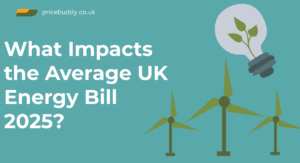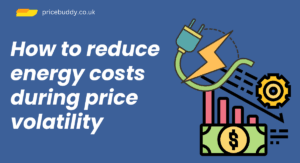How to reduce energy costs
One of the largest costs to businesses in the contemporary world is energy costs. In recent years, the companies in the UK have been significantly affected by the changes in the prices of electricity and gas, which have been dramatically increasing or decreasing within several months (usually by 3050 percent). The resulting volatility can leave budgeting challenging, particularly when it comes to the small and medium-sized companies that do not have contracts of fixed rates or the internal teams of energy management.
It is not only learning how to minimize the bills in these uncertain times, but also knowing how to manage your operations, increase efficiency and save your business against the sudden turn of the market.
This guide talks of the reasons behind the variable prices of energy, and how they impact small and large businesses differently and most importantly, the proven actionable strategies that you can be currently implementing to handle and lower your businesses energy expenses.
Understanding Energy Price Volatility and Its Business Impact

Energy price volatility is defined as a quick change in the price of electricity or gas within a short time. It is affected by a complicated combination of international market forces, local supply and government policies. To the businesses, such volatility may result in uncertain operating costs and their future financial position.
Why Energy Prices Fluctuate
The prices of energy are always changing based on the international supply and demand. Unpredictable spikes can be caused by extreme weather conditions, supply chain problems, as well as political unrest and it is challenging to predict how a business will run in advance. Though the government policy measures such as carbon tax or renewable incentives help to ensure sustainability it can impose a cost burden in the short-term as well.
The use of renewable fuels and fossil fuels in the UK contributes to the volatility in prices whereby the wind or solar energy is not sufficient the grid would turn to other costlier sources such as natural gas. By October 2025, the average rate of electricity is about 24 p/kWh in small companies and 18-20 p/kWh in large-users. This is why it is crucial to seek the viable means of reduce energy costs large business and establishing the long-term financial stability.
How Volatility Affects Small and Large Businesses
Energy price volatility impacts all businesses but not equally.
- For Small Businesses: The SMEs normally lack bargaining power on these suppliers and may be subject to variable rate tariffs. This exposes them more to price changes. Any ten percent rise in electricity prices can soon chew up profit margins, particularly in energy-intensive industries, such as hospitality or retail.
- For Large Businesses: Big companies usually use enormous power at the expense of being able to consume large quantities of power. They are able to tap wholesale deals, employ high-tech energy management systems or even produce their own power. Nevertheless, they have also complicated regulatory requirements and increased absolute expenditure in case of an increase in prices.
Whether you run a corner café or a multi-site factory, the key challenge is the same: balancing cost control with operational performance.
Effective Tips to Reduce Energy Costs for Small Businesses

Small businesses do not always have the money to upgrade systems on a large scale, but that does not imply that they cannot save. Actually, small operational alterations, which are implemented regularly, can reduce business energy costs UK wide. Easy steps such as checking on consumption, servicing of equipment, and educating employees on how to conserve energy may go a long way with time in ensuring that businesses save money and work more sustainably.
Smart Operational Changes to Cut Daily Usage
The following are some of the practically low-cost suggestions to minimize energy expenses among small businesses that you can begin to implement at once:
- LED Lighting change: LED bulbs consume up to 80 percent of the power of fluorescent bulbs and have a lifespan of up to 10 times. The replacement of the old lighting can save hundreds of pounds annually.
- Control Heating and Cooling: Smart thermostats and timers should be used to control temperatures. By heating the house only 1 C, the bills can be cut by up to 10% less.
- Eliminate Standby Power: Equipment left on standby can account for 5–10% of total energy use. Switch off appliances at the end of each day.
- Optimize Workspace Layout: Move desks and equipment away from heaters or air vents to ensure efficient temperature control.
- Encourage Employee Awareness: Run short energy-awareness campaigns to motivate staff. Simple actions, like switching off unused lights or unplugging chargers, add up over time.
Such minor changes can easily reduce business energy costs by 10-20 percent in the initial year with no capital outlay.
Investing in Energy-Efficient Equipment and Technology
When daily activities are streamlined, look at spending on technology that can be saved in the long term and be efficient.
- Upgrade Equipment: Replace the old appliances, boilers, or HVAC systems with the new ones with efficient energy usage. Search items with energy rating of A.
- Install Smart Energy Monitors: Monitor live data on usage as a way of determining peak energy consumption times or energy inefficient behaviors.
- Enhance the Insulation of Buildings: insulate windows, doors, and roof with a purpose of trapping heat in winter and air in summer.
- Install Motion Sensors: Automated lighting can also be used so that the unused rooms or corridors are not used to waste energy.
- Consider Renewable Get renewable energy sources like solar panels which are becoming cheap and small systems can provide a considerable share of your energy bills.
When you are in the UK, you need to verify whether your business is funded under such programs as the Industrial Energy Transformation Fund (IETF) or local council sustainability grants. Such initiatives usually subsidize a portion of the initial efficiency enhancement cost, allowing small businesses to modernize without incurring the significant financial burden of such modernization.
Proven Ways to Reduce Energy Costs at Scale
In the case of large businesses, saving power will result in efficiency and resiliency. Through system upgrades, smart technologies, and performance tracking with data, organizations will be able to reduce waste, decrease bills, and achieve sustainability and increase long-term stability. The energy management at scale regularly saves money and achieves a stronger and more sustainable brand reputation.
Using Energy Audits and Data Insights to Find Savings
One of the smartest investments that a business can have is a professional energy audit. It shows a vivid image of how, when and where is it being used and more so where it is being wasted.
An audit typically includes:
- Usage Analysis: Determining the high consumption zones or poor processes.
- Benchmarking: The performance comparison with the industry standards.
- Recommendations: Providing feasible measures to save based on lighting upgrade to process optimization.
- ROI Projections: Description of the financial gain of every recommendation.
reduce energy costs up to 15-30 percent of their energy expenses by taking half of the recommended actions. The smart sensors and digital dashboards used in the modern audits also provide real-time feedback to the facility managers so that they can make informed decisions.
Adopting Demand Management and Renewable Energy Solutions
After getting to know the profile of your energy the second thing is to regulate when and how you consume the energy and the source of energy.
Here are the high-technology options of saving energy in large scale:
- Demand Response: Move heavy energy consumption (such as production or charging equipment) to off-peak periods when the rate is less.
- On-site Generation: Have your own electricity generation by installing solar panels, wind turbines or combined heat and power (CHP) units.
- Battery Energy Storage: cheap, off-peak electricity may be stored and used when the cost of electricity on the grid increases dramatically.
- Power Purchase Agreements (PPAs): Ensuring consistent prices: This is achieved by purchasing electricity directly on the farm of renewable generation.
- Smart Building Systems: Have heating, lighting, and ventilation that will be automatically adjusted according to occupancy and weather.
In the case of large businesses in the UK, a combination of smart demand management and renewables helps reduce the costs of energy and enhance the compliance with the environmental regulations such as SECR (Streamlined Energy and Carbon Reporting).
Conclusion
The volatility of energy prices is an unavoidable event, but the increase of costs doesn’t have to be. You can reduce energy costs and gain control over your energy expenditure by understanding market trends, improving daily efficiency, and investing in smart technologies.
Harmless operational modifications, frequent energy examinations and renewable choices go all the way to diminish waste and establish long-term stability. The competitive businesses are the ones that plan in advance, consume less and smarter.
Ready to reduce your business energy costs and protect your bottom line? PriceBuddy can help you analyze usage, uncover savings, and create a tailored energy strategy that works for you.
👉 Get started with PriceBuddy today and start saving smarter.












